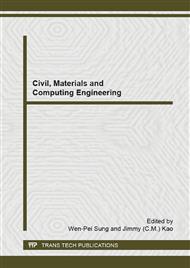p.436
p.440
p.451
p.456
p.460
p.464
p.469
p.476
p.480
Application Strategy for Container Architecture
Abstract:
In the current process of urbanization in our country, more than 1,000,000 waste containers are abandoned every year. The recycling or reuse rate of waste container is low, and relevant research is insufficient, resulting in the waste of resources and energy, as well as environmental pollution, which does not comply with the principle of sustainable development. Use of waste or old containers by converting them into housing, temporary sites or mobile facilities and other projects is feasible. The reuse of abandoned building materials not only can save energy and solve practical problems, but also can develop a new model of container construction techniques. It is of great significance.
Info:
Periodical:
Pages:
460-463
Citation:
Online since:
December 2014
Authors:
Price:
Сopyright:
© 2015 Trans Tech Publications Ltd. All Rights Reserved
Share:
Citation:


